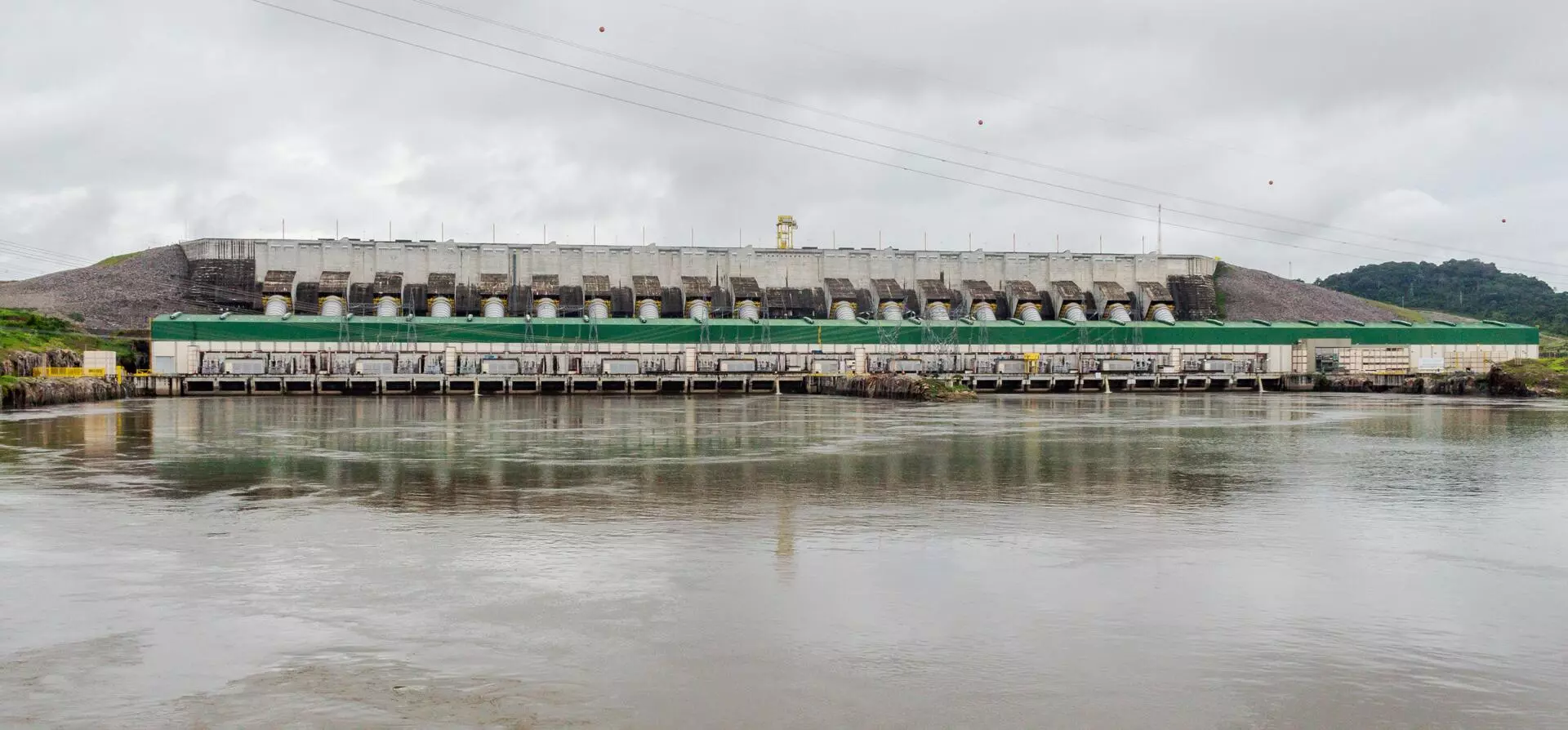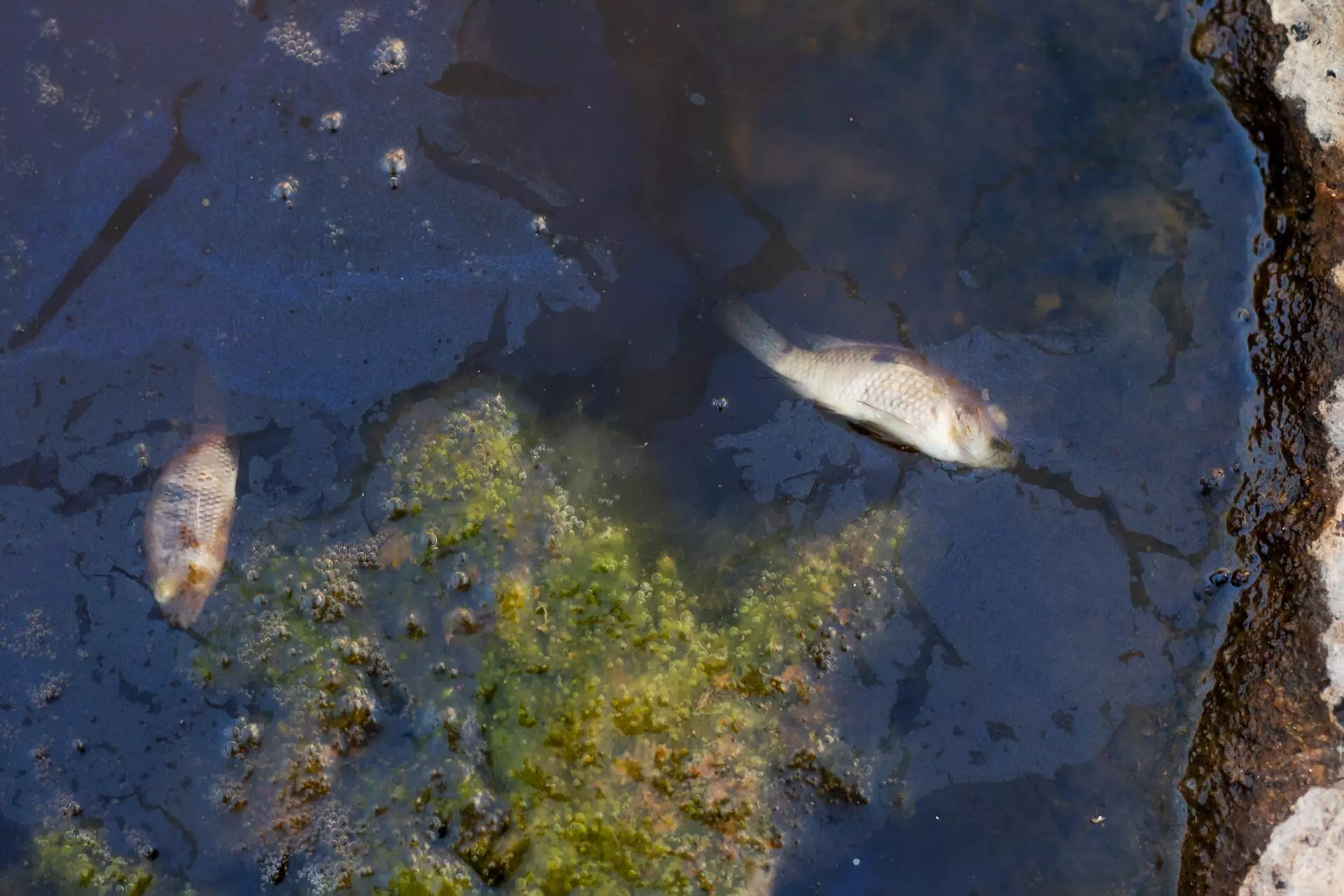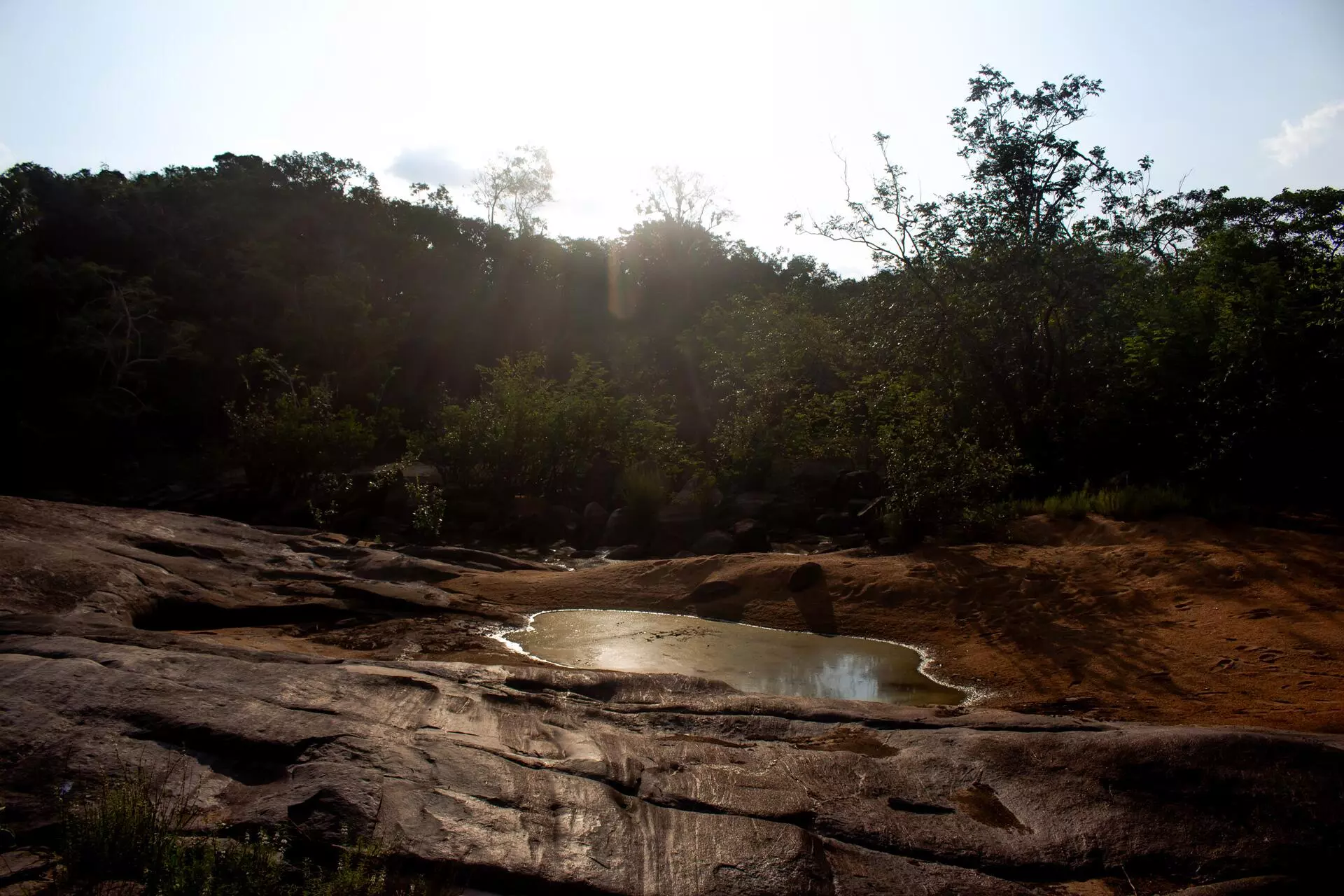The extreme drought of 2023 has affected the lives of rivers, forests, more-than-humans, and the populations of the Brazilian Amazon. Around 228 dolphins have died in the state of Amazonas, some rivers have become impossible to navigate, and food and clean water are in short supply. This alarming situation haunts the world. But for the Xingu River, in Pará, these same extreme conditions have been chronic since 2015. In Amazonas, the catastrophe of the 2023 drought has been attributed to a sum of factors: deforestation and silting along riverbanks, the El Niño phenomenon, the anomalous heating of the Northern Atlantic Ocean, and global climate change. While in Pará, the main cause is the Belo Monte hydroelectric plant’s sequestering of the Xingu River’s waters at what is known as the Big Bend or Volta Grande region of the Xingu River.
The artificial water release regime forced on one of the Amazon‘s most biodiverse regions is interrupting lifecycles. When the water is low, thousands of fish, mostly juveniles, are left stuck in puddles of water, which in the heat reach a temperature of nearly 40 degrees Celsius (104 degrees Fahrenheit), killing them all. The situation outrages the Indigenous peoples and Ribeirinhos (a traditional forest people) who live in the region and who try to rescue the juvenile fish.
In September, Helio Bezerra da Silva, a Ribeirinho from the Nova Conquista region, came across one of these puddles; it was filled with dying fish, its water already turning green. When water is this color it means that algae have proliferated, lowering oxygen levels in a process with the scientific name of eutrophication. Armed with nothing more than a bucket, Helio picked up dozens of fish and carried them to the main stream of the Xingu River so they could survive. Around this same time, Josiel Juruna, a coordinator of the Independent Environmental Territory Monitoring (Mati) group, also took his family to rescue various species of fish trapped in puddles near Miratu Village, where he lives.
The Brazilian Institute for the Environment and Renewable Natural Resources (Ibama), the agency tasked with environmental oversight in Brazil, told SUMAÚMA that formation of artificial hydropeaks is related to the plant’s operation and that this variation follows the water concession rules as well as orders issued by the National Electric System Operator (which coordinates power generation and transmission). The environmental regulator has placed Norte Energia, the plant’s concessionaire, under a requirement to rescue fish stranded in puddles, but saving all of them is impossible. “With the implementation of the Belo Monte Hydropower Plant, puddle formation intensified in the Reduced Discharge Area, due to variation in downflow discharges and spillway operation.”
Ibama considers formation of these puddles to be an impact of the Belo Monte Dam, which is why it has required that Norte Energia, the plant’s concessionaire, rescue the fish; but saving all of their lives is impossible. In a report submitted to the environmental regulator, the company said it had rescued an estimated 3,935 fish across 59 species in the month of September 2023. During this same period, Indigenous peoples and Ribeirinhos found thousands more perishing in puddles.
In a statement sent to SUMAÚMA, Ibama’s technical team said that it monitors fish rescue activities using technical reports drafted by Norte Energia. The team also said that drones are used for aerial monitoring in potential areas of fish entrapment, providing information to rescue teams. “Puddles identified are monitored in advance of rescue activities by assessing the puddle’s abiotic information (dissolved oxygen, temperature, and water pH) or fish behavior. If a risk to icthyofauna [fish as a whole] is identified, a rescue is performed,” according to Ibama’s statement. From August 1 to November 7 of this year, Ibama says that 14,883 live fish were rescued from the area of reduced discharge.
The environmental regulator also says that it is considering a proposal from the company to improve the problem “when the Belo Monte Hydropower Plant is operating at full capacity.” In a statement sent to SUMAÚMA, Norte Energia denied that its operations have caused a drought on the Xingu River.
Ibama’s technical licensing team did, however, confirm to SUMAÚMA that this phenomenon has grown more intense because of the discharge variations caused by the plant’s operation and that from 2015 to 2022, “9,500 kilos of fish were rescued, while around 350 kilos of fish were found dead” in these locations – Ibama uses kilos to measure the amount of living and dead beings found in the puddles formed by the plant’s operation.
The deaths of thousands of fish in the Volta Grande region is not a natural phenomenon. Part of the Xingu’s flow has been dammed near the city of Altamira, Pará, in northern Brazil, and another considerable part has been deviated from the Volta Grande area to a 20-kilometer-long channel, using this sequestered river water to power hydroelectric turbines. This situation affects a 130-kilometer stretch of the Xingu River, which is experiencing what specialists call “extreme hydrologic restriction.” “There is nothing anywhere in the world like what they did on the Xingu, it’s a unique situation,” says André Sawakuchi, a geologist with the University of São Paulo (USP). The balance between how much water will be deviated to the plant and how much will be released for the Xingu’s living beings is what environmental licensing agents call a flow management plan or hydrogram.

The Belo Monte hydroelectric plant’s powerhouse, on the Xingu River: the water restrictions imposed by the plant are taking the lives of animals and causing damage to property. Photo: Soll/SUMAÚMA
Based on rules in its license and in the concession granted by the National Water and Sanitation Agency (ANA), there must be a certain guaranteed volume of water each month and this discharge must, to the greatest extent possible, match the river’s natural rhythm. In 2016, during the plant’s first year in operation, an artificial flood occurred when water was released suddenly and without warning, panicking the region. Residents in the Volta Grande region lost boats, fishing equipment, and pans and other kitchen utensils that had been near the river.
The company was later forced to warn residents of river fluctuations, which it does through WhatsApp messages. Nevertheless, so-called hydropeaking (drastic and artificial variations in the river’s flow) continues to occur and trap fish.
.embed-container { position: relative; padding-bottom: 56.25%; height: 0; overflow: hidden; max-width: 100%; } .embed-container iframe, .embed-container object, .embed-container embed { position: absolute; top: 0; left: 0; width: 100%; height: 100%; }“Hydropeaks are abrupt variations to the river’s discharge that did not exist naturally,” André explains. “Fish have no way to receive messages from Norte Energia, they don’t have WhatsApp, so they’re stuck,” the scientist adds. When Sawakuchi estimated how many puddles were formed by the reduced discharge in the Volta Grande region, he came to an astounding 12,500 tiny fish traps.

Fish die when they are stranded in hot puddles of water (around 40 degrees Celsius) that have been depleted of oxygen. The photograph above was taken in the Volta Grande region of the Xingu River, in Paquiçamba Indigenous Territory. Photo: Soll/SUMAÚMA
According to science, there are ecological signs to ensure fish know when it is time to go upstream or downstream, to move closer or further away from the banks when waters flood and dry up. “Aquatic species understand that it has stopped raining, that the water is getting hotter, more stagnant, they notice and they leave,” explains Jansen Zuanon, a retired researcher with the National Institute for Amazonian Research (INPA) who has been following the situation in the Volta Grande region of the Xingu River for years.
“Hydropeaking is caused by the rise and fall in demand for energy. This means it has nothing to do with local weather. It’s not a natural process. The water is no longer predictable, so the fish have a much higher chance of getting stuck.”
In December 2022, the Mati group, a collection of Ribeirinho and Indigenous scientists, submitted a proposal for a hydrogram that would bring artificial discharges closer to the Xingu River’s natural discharge, reducing fish mortality and guaranteeing that species reproduce. The proposal is being assessed by the technical team in the environmental agency’s licensing department. Nevertheless, there is no deadline for a response. Ibama did not provide any comments on any decision by publication. If the proposal were to be accepted in the coming weeks, with the rainy season nearing in the region, the damage caused by the Belo Monte Dam could begin to be reversed, swelling hopes that the river’s flooding could once again be a time of reproduction and abundance for the fish and for the people.
In a statement sent to SUMAÚMA, Norte Energia says that it “operates its discharges in strict compliance with the concession and control of the National Water and Sanitation Agency (ANA), Ibama, and the National Electric System Operator (ONS).” “There have always been droughts in the region during the Amazon summer, from July to November,” Norte Energia claims, adding that “Any statement that the Belo Monte Dam caused a drought in the Volta Grande region of the Xingu River is false,” the company contests, contradicting the analyses and studies done by the Mati group’s scientists and researchers. Norte Energia did not provide responses on the number of dead fish, on the occurrence of hydropeaking, or on what mitigation measures it has adopted in relation to the problem. SUMAÚMA specifically asked the company about the number of dead fish during the last three months, but no data was provided. Regarding fish rescues, the company says that it “informs Ibama” of every instance. The company also stated that the plant is currently generating 255 megawatts per day.
Fact-checker: Plínio Lopes
Proofreader (Portuguese): Valquíria Della Pozza
Spanish translation: Meritxell Almarza
English translation: Sarah J. Johnson
Photo Editor: Lela Beltrão
Layout and finishing: Érica Saboya
Editors: Malu Delgado (news and content), Viviane Zandonadi (editorial workflow and copy editing), and Talita Bedinelli (coordination)
Director: Eliane Brum

Where water used to flow, now there is only drought and the destruction of human and more-than-human lives in the Volta Grande region of the Xingu River. Photo: Soll/SUMAÚMA





